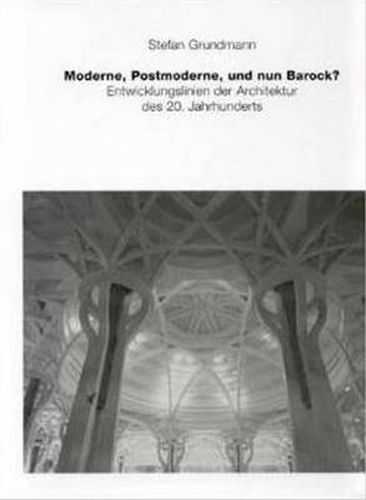Moderne, Postmoderne und nun Barock?: Entwick- lungslinien der Architektur des 20. Jahrhunderts
Stefan Grundmann

Moderne, Postmoderne und nun Barock?: Entwick- lungslinien der Architektur des 20. Jahrhunderts
Stefan Grundmann
This book is an attempt at architectural criticism - that is how Robert Venturi opened the discussion on Post-Modernism in architecture in Complexity and Contradiction in Architecture a generation ago. And this was a typical beginning. Criticism of the Modern Movement by architects such as Le Corbusier, Mies van der Rohe and, to a certain extent, Frank Lloyd Wright was central to Post-Modernism. Soon the architectural historians joined in with the architects, particularly Charles Jencks in the English-speaking world and Heinrich Klotz in Germany. Here too Post-Modernism was the start, with three fundamental critical points about Modernism: the emptiness of its architecture, the lack of relation to the surroundings and the over-emphasis of functional sm against decoration. And so, even if one does not use pamphlets like Tom Wolfe’s or Jencks’ early work as a yardstick, the image of the buildings by what are still the best-known architects of our century is strongly overshadowed. The truth is that the international Style reflects the basic forces that architecture can express extraordinarily impressively and always with decided interplay, and thus also with a pronounced unity of effect; and additionally it develops these formal values especially intensively from content. Traditionally such things are called classical. What followed this, the whole spectrum of styles from late Modernism via High-Tech and Deconstructivism to Post-Modernism is all a reaction to the unity of the International Style: either one point - in terms of form or content - is taken out, exaggerated and thus made into its opposite, or such a point is consciously negated. Until now this phenomenon has been known as Mannerism to art historians. What is characteristic of Baroque as the period after High Renaissance Classicism and Mannerism is less clear; in any case, entirely positive aspects of both found their way into Baroque, and undoubtedly the latter is closer to High Renaissance Classicism in spirit than it is to Mannerism. Cannot similar things be seen in the last bare decade of architectural development?
This item is not currently in-stock. It can be ordered online and is expected to ship in approx 4 weeks
Our stock data is updated periodically, and availability may change throughout the day for in-demand items. Please call the relevant shop for the most current stock information. Prices are subject to change without notice.
Sign in or become a Readings Member to add this title to a wishlist.


